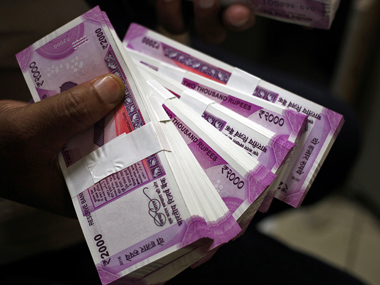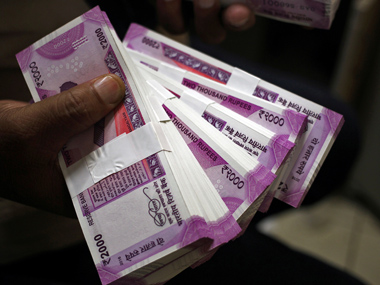“Indians defecate everywhere. They defecate mostly, besides the railway tracks. But they also defecate on the beaches; they defecate on the hills; they defecate on the river banks; they defecate on the streets; they never look for cover." - VS Naipaul
One wonders what Sir Vidia would make of Rathan, the toilet-keeper of Bangalore. Rathan, 22, lives, works, eats and even sleeps in the Richmond Road public toilet according to the Times of India. His tiny settlement is in between the walls of the toilets for women and men. His daily target is to make Rs 550 from those who come to use it because he has to pay Rs 400 to the contractor who got him the job.
“Where else do I survive in Bangalore?” he told the TOI. “My earnings are less because not everyone wants to use this filthy toilet.” Some days he only makes Rs 300.
What is clogging up the great public toilet experiment in India? As a country, we are obsessed with a horror of the unclean. Perhaps that is why we seem, as a country, completely unable to keep our public toilets clean. The unsafe, unclean, unsanitary public toilet is really an emergency for women. For men it’s simpler – have wall, will pee. Even painting Krishna and Buddha and Jesus on the wall does not deter the most determined bladder. But that’s not exactly true either.
Many men, especially urban upper middle class types, would hesitate before whipping it out unless it was in the middle of nowhere. You just hold it in or use your well-dressed class privilege and walk smartly into a swanky hotel lobby or a mall or a McDonald’s and do your business there. What we need is a Smartphone app if there isn’t one already – use GPS to find the nearest clean toilet.
The public toilet experiment seems to be stuck in this Catch-22 situation – they won’t get better until you build more, but no one wants to build more because the ones we have, stink. The Bangalore Patrol survey done by Janaagraha and The Times of India finds that there were no public toilets at all in 70 wards out of 198 in Bangalore. Nagpur has one toilet per 8,000 persons. (The WHO recommends one per 100). A survey done by Transparent Chennai in 2011 found only 714 public toilets for a population of close to 5 million. (Transparent Chennai’s Build a Map of Chennai actually comes with a toilet layer.)
Everyone knows it’s a crisis. 54 percent of urban slum dwellers have no access to any toilet. A “ technology ” that relies on 750,000 scavengers to collect the waste from 13 million bucket latrines is obviously seriously outdated. Girls have been raped by men hiding inside public toilets. A slum dweller in Mahim killed his neighbour for taking too long in the public toilet. “Sometimes basic human needs take over all rationale,” another resident told the media.
The pay-per-use model was supposed to fix the toilet problem. But like many other private-public partnerships it’s been going down the drain as well. TOI says the Nirmalya Shouchalayas supported by the Infosys Foundation with the personal funds of Sudha Murthy have turned into stinking dirty places because of poor maintenance by contractors and lack of civic consciousness by the public. The Bangalore Corporation made matters worse at one point by making the toilets free which meant the operators running them lost what little interest they had.
The Sulabh Shauchalaya , originated back in 1974, is obviously the poster-toilet of the nominal pay-per-use model and every city has tried some variations on the theme. The logic is a pay-per-use toilet in a heavy footfall area can cover its construction cost in a year. Then you can use the surplus to build public toilets in slums or areas with less traffic.
The problem, writes Kalpana Sharma for InfochangeIndia.org, is a class one.
Those with money have secure housing and therefore do not need to worry about public toilets. They can walk with confidence into hotels or shopping malls when they are out, and otherwise have toilets in their homes. For the poor living in informal housing without individual toilets, public toilets are a necessity. If, on top of that, they have to pay each time they use it, the burden becomes heavy.
Thus came the idea of a monthly charge instead of a pay-per-use model. But Rs 20 per family per month isn’t going to cover operations and maintenance either.
There are ideas aplenty. Indians are very good at coming up with brainwaves. How about a separate children’s toilet since the normal ones were too wide for little kids to straddle? As a result mothers were making their little ones defecate just outside the toilet block. (Now that’s also part of our strange mentality that what nuisance little children do does not really count.)
Fuad Lokhandwala stung by an American comic Jay Leno’s jibe about how Indians can build nuclear bombs but not decent toilets built Rs 10 lakh dream loos in upmarket areas of Delhi to be subsidised by upmarket advertisers. Mumbai’s SPARC decided to have a community centre on top of the toilet with the caretaker living right there with his family. Abir Mullick, a professor at the Georgia Institute of Technology, came up a design for a new age public toilet with well-ventilated prefab units that can be stacked to make two-storied toilets and where the waste is collected in air tight containers and hauled away by vans fitted with mobile suction technology to remote plants to generate gas. (Read more about that here .)
But ultimately the best laid plans fall apart because of three reasons writes Kalpana Sharma.
We build them but don’t put in the energy and resources to maintain them.
Like any construction job, building toilets also needs to grease the palms of greedy middlemen. Sometimes they are just built shoddy.
The real solution to the public toilet problem is secure housing. Then the public toilets will be used for what they were meant for – the person on the go who suddenly needs to go. But who wants to take on that gigantic a problem?
Perhaps part of the reason for our apathy is World Toilet Day falls on 19 November. That happens to also be the birth anniversary of Indira Gandhi. And which politician wants to raise a stink about toilets on that hallowed day?


)




)
)
)
)
)
)
)
)